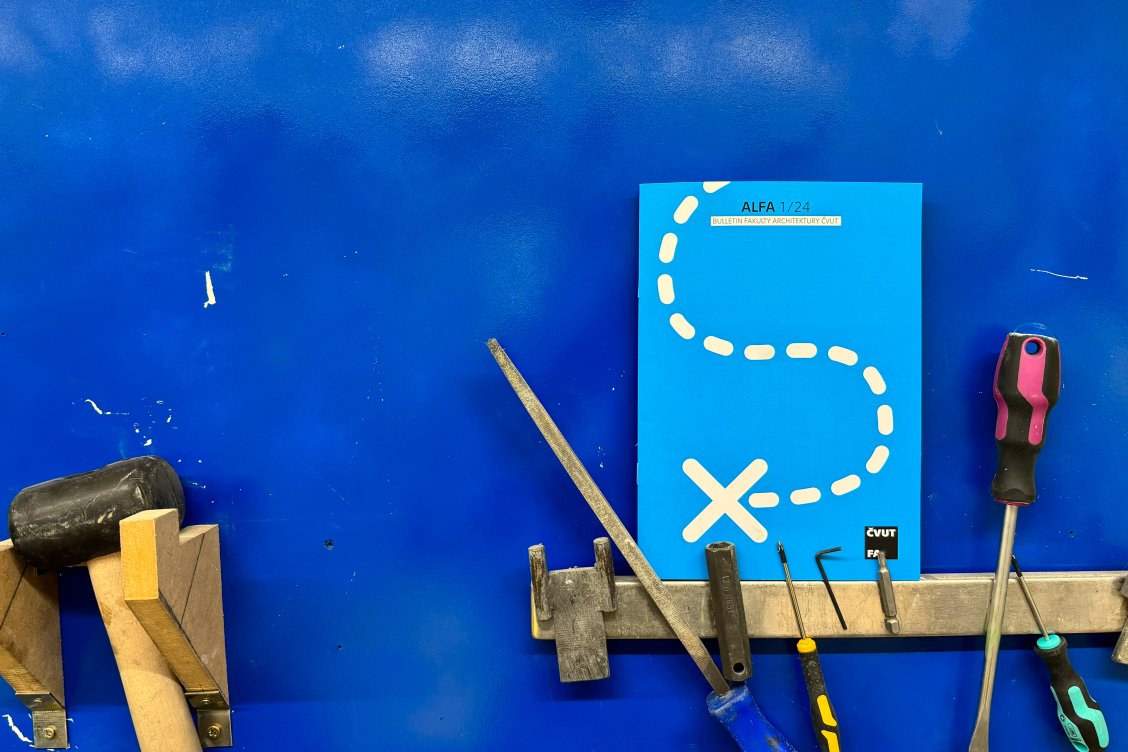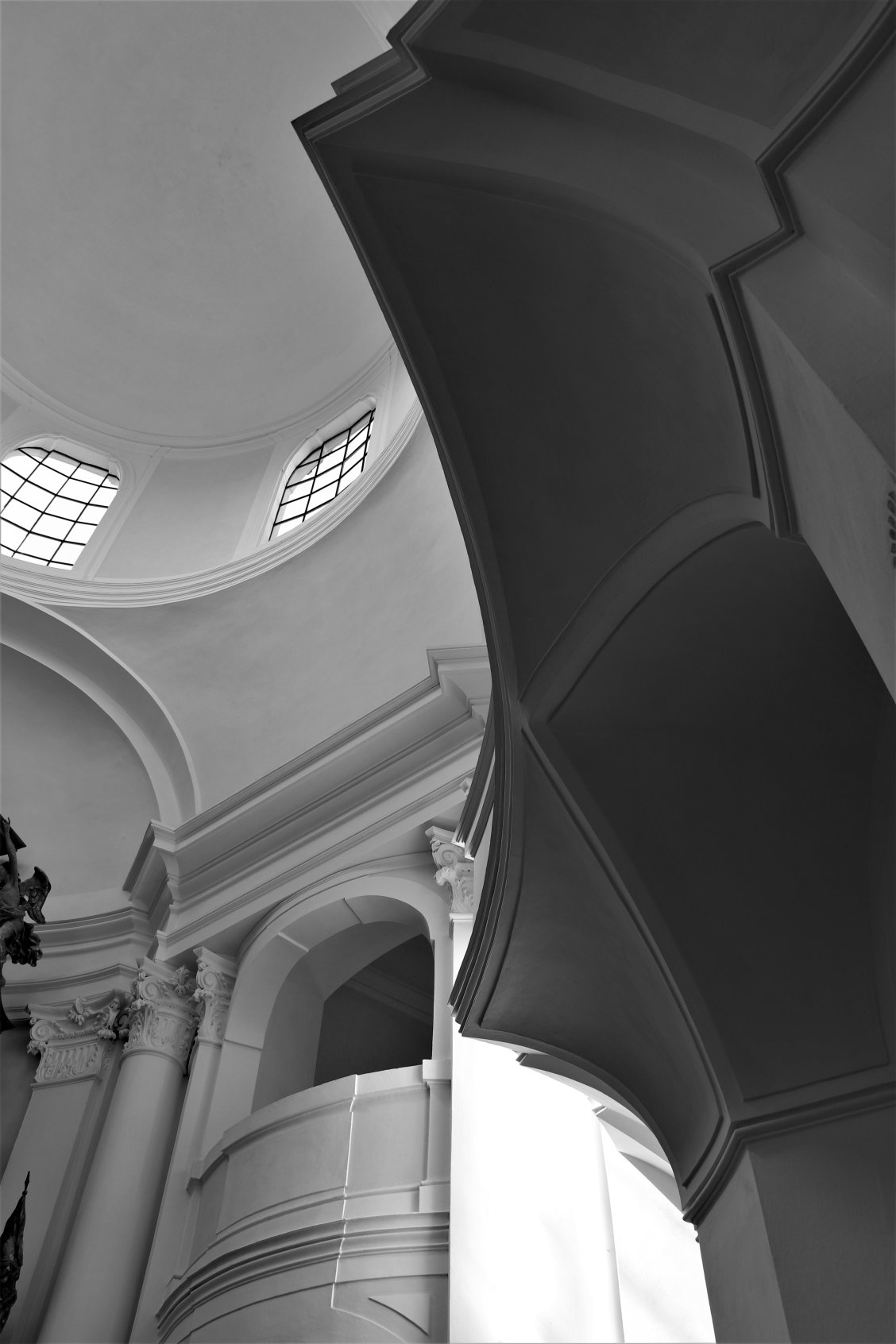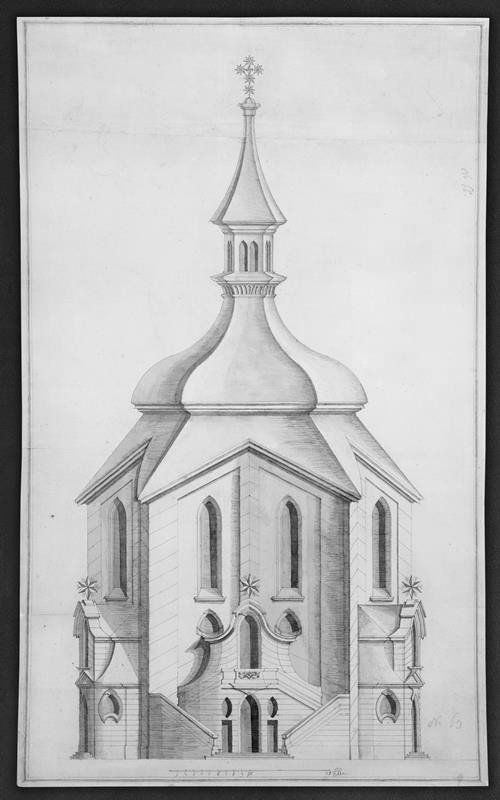Alfa 1/24 is coming out
25/3/2024

On the following pages doc. Irena Fialová deals with the balance of her position as Vice-Dean for International Relations - teacher and student mobility in recent years. Under the heading "Students and cantors today and in fifty years...", Alfa attempts to enliven the extensive summary of events and phenomena, documented by precise statistics, with small probes, launched to selected details, e.g. comparing the educational methods of the FA CTU in Prague and the Technical University of Munich, through the eyes of two students, Markéta Osifová and Emily Blum. And besides these, a comparison of architectural studies in Australia and Belgium through the lens of landscape architect Ing. Vladimír Sitta and urbanist doc. Jiří Klokočka, two of our and local (then) faculty cantors... A "cross-border" perspective is also offered by the invitation to the international workshop Athens of urbanist doc. Jana Zdráhalová, which the faculty has been organizing for three years, or a report on the school's solidarity towards refugee students from Ukraine.
The next pages of the school bulletin turn the reader's attention to history, this time by commemorating the work of Jan Blažej Santini - Aichel, one of the most important Czech architects of all time, whose three-hundredth anniversary since his death last year was celebrated by the whole of cultural Europe. The co-organization of the recent international Santini conference in Rome was taken over by FA CTU in Prague, represented by the historian Prof. Pavel Kalina, author of the summary report, thanks to which the readers of Alfa receive an insightful report from the pen of an expert and writer. The atmosphere of the debate around Santini's work and artistic message is made more accessible by Alfa by publishing fragments of the plan documentation of the pilgrimage church of St. John of Nepomuk on Zelená hora near Ždár nad Sázavou and first-class black and white images from Kalina's lens.
Visitors to "Fragnerka" will also be interested in an interview with the new director of the Prague architectural gallery, which is now owned by our CTU. In the final section of the Bookworm, the reader will find a small surprise when the respondents, a ZAN teacher and a graduate of the FA of the CTU, publish their thoughts after reading a book, aka "the bug in my head", this time coincidentally (no pun intended) an identical book.
The latest issue (in Czech) can be viewed here
From the current issue we select
Without Borders or Mobility of Teachers and Students
State of current situation report
doc. Irena Fialová
Visiting professors
As of 2018, we have recorded almost 120 distinguished foreign guests who have lectured, led a studio or been an opponent at our faculty. The development of the visiting professor studio is very significant. In 2017-18 we managed to attract the German landscape architect Prof. Till Rehwaldt, in 2018-19 the most important contemporary Slovenian architect Prof. Vas Perović and in 2019-20 the renowned Czech-German architect Prof. Mirko Baum. Since the new dean's term, the Visiting Professor's studio has become an independent institute and the invitation for 2022-23 was accepted by the eminent Dutch architect Prof. Winy Maas, partner of the world-renowned MVRDV office, together with assistants Javier Arpa Fernandez and Adrien Ramon.
(…)
I appreciate the individual approach here
Emily Blum, Bachelor of Architecture and Urbanism, 3rd year, Faculty of Architecture TU Munich
The study project is usually based on a series of lectures, these are held every week under the guidance of a professor. In addition, you consult your project every week. A big difference compared to the CTU is that you always work on studio projects in groups of two to four people. It's just teamwork. And the most important difference: during the semester the student does not have personal contact with the professor - the head of the studio. He consults with "studio assistants", which are studio employees, usually young architects who also work in an architectural office.
And then, as at the CTU, there are three presentations during the semester. The professors attend the first two, but they usually only listen to and discuss a third of the presentations. It is only at the final presentation of the semester that the professor listens to and discusses all the groups and projects...
(…)
Five months in Tokyo, six months in Delft
Markéta Osifová, 2nd year of Master's studies, Plicka - Škrna studio, Department of Urbanism
You could say that the atmosphere in Tokyo and Delft is completely opposite. For the Japanese, hierarchy, excessive consideration and perfectionism are very important. The Dutch, on the other hand, have a habit of expressing themselves very clearly and concisely, from which foreigners often conclude that they are rude and impolite. Working hours are also very different in the two countries. Although things are also slowly getting better in Japan, most find it normal to go to school at 9am in the morning and go home from work when the school closes (at Hosei University it was 11am), five to seven days a week. In the Netherlands, school was open until 10pm, but most students finished at 4 or 5pm, and it was not uncommon for them to go home earlier when it was nice out.


